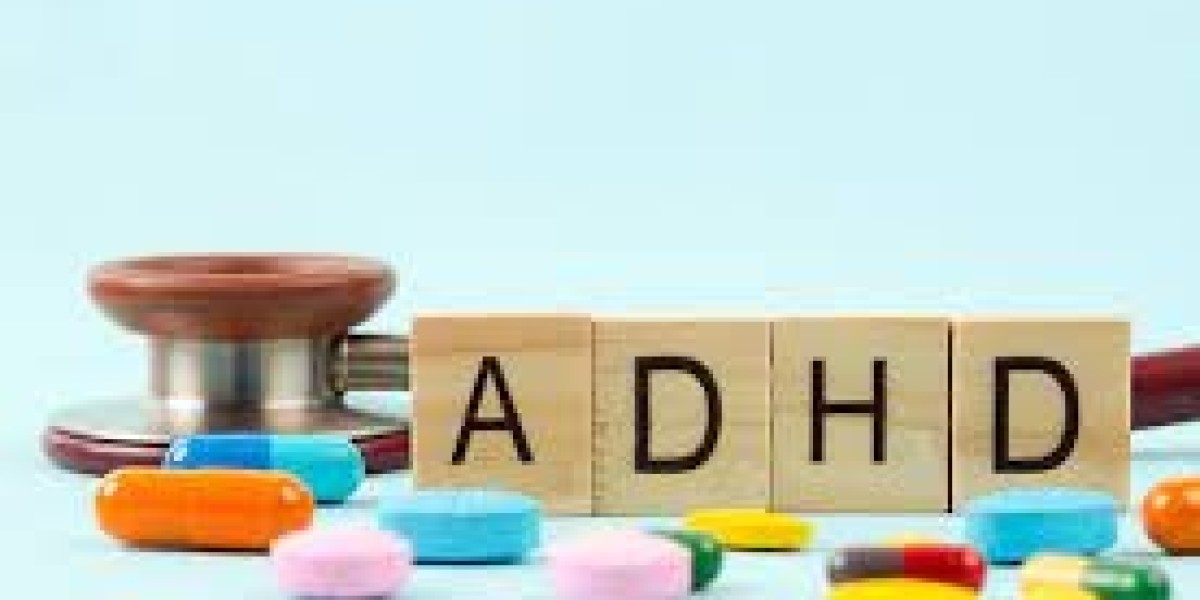The neurodevelopmental disorder known as Attention Deficit Hyperactivity Disorder (ADHD) is typified by impulsivity, hyperactivity, and inattention. Non-stimulant drugs provide an additional treatment option for those who may not respond well to stimulants or who prefer non-stimulant choices, even though stimulant medications such as amphetamine and methylphenidate have long been the mainstay of ADHD treatment. This article explores the mechanisms of action, efficacy, and application of non-stimulant ADHD medications in therapy, delving into their scientific basis.
Comprehending Non-Stimulant ADHD Drugs
Neurotransmitters like norepinephrine and dopamine are the main targets of non-stimulant ADHD treatments, however they do so via different methods than stimulants. A lot of people with ADHD are administered atomoxetine (Strattera) and guanfacine (Intuniv), two of the most popular non-stimulant drugs.
Atomoxetine,
often known as strattera, is a selective norepinephrine reuptake inhibitor (SNRI) that acts by preventing the brain from reabsorbing norepinephrine. Atomoxetine improves neurotransmission in areas linked to attention and impulse control, like the prefrontal cortex, by raising norepinephrine levels.
Atomoxetine's mechanism of action is centered on norepinephrine, as opposed to stimulant drugs, which predominantly target dopamine. This makes it a unique alternative for people who may not tolerate stimulants or who have co-occurring illnesses like anxiety or substance use disorders.
Guanfacine (Intuniv):
Guanfacine is an alpha-2 adrenergic agonist that modifies norepinephrine release by acting on prefrontal brain receptors. Guanfacine improves executive functioning, attention, and behavioral regulation via activating these receptors.
When someone doesn't react well to stimulants, guanfacine is frequently used as a stand-alone treatment or as an addition to other drugs that contain stimulants. Because of its extended-release formulation, it can be used once daily, which is convenient and provides long-lasting symptom relief.
The effectiveness of ADHD medication that isn't stimulant
The efficacy of non-stimulant drugs in the treatment of ADHD has been shown in numerous research. In the long run, non-stimulant drugs have demonstrated comparable efficacy in lowering symptoms of impulsivity, hyperactivity, and inattention, even though they might not provide the same immediate symptom relief as stimulants.
Atomoxetine has been demonstrated in clinical trials to enhance functional results, academic performance, and symptoms of ADHD in both adults and children. Guanfacine has also shown promise in lowering symptoms of ADHD and enhancing executive functioning in both adult and pediatric groups.
For those who find the unpleasant side effects of stimulants—such as insomnia, poor appetite, or mood swings—non-stimulant drugs are very helpful. Furthermore, people with concomitant psychiatric disorders or a history of substance misuse may benefit more from non-stimulant treatments.
Action Mechanisms and Neurobiological Impacts
Non-stimulant ADHD medications have intricate and varied neurobiological effects. Increased synaptic norepinephrine levels from atomoxetine's suppression of norepinephrine reuptake improve neurotransmission in networks related to attention, impulse control, and cognitive flexibility.
By stimulating alpha-2 adrenergic receptors in the prefrontal cortex, ganfacine reduces norepinephrine release, which enhances behavioral regulation and executive performance. Guanfacine treats the main symptoms of ADHD by specifically targeting receptor systems linked to the disorder's pathogenesis.
Aspects to Take Into Account in Clinical Practice
Clinicians need to examine a number of criteria, such as patient preferences, comorbid conditions, and medication tolerance, when deciding which non-stimulant medications to use for treating ADHD. The entire therapeutic effect of non-stimulant drugs may take several weeks to manifest, and they may have a delayed commencement of action for those who cannot tolerate or do not respond well to stimulants.
Furthermore, doctors should keep a careful eye out for any unusual side effects that non-stimulant drugs may have. Atomoxetine frequently causes gastrointestinal distress, exhaustion, and appetite changes as side effects, but guanfacine can result in drowsiness, lightheadedness, or hypotension, especially when starting or stopping the medication.
Potential Advantages of ADHD Medication Without Stimulants
Apart from their ability to effectively alleviate the fundamental symptoms of ADHD, non-stimulant drugs possess many other possible advantages that set them apart from stimulant medications. These advantages make them appropriate for particular patients and clinical situations.
Decreased Risk of Abuse and Dependency:
Because non-stimulant drugs have different mechanisms of action from stimulant drugs, they are less likely to be abused and become dependent. Examples of such drugs are guanfacine and atomoxetine. For those who have a history of substance misuse or who are at risk of developing a substance use disorder, this makes them safer options.
Long-Lasting Symptom Control:
Non-stimulant drugs frequently offer persistent symptom relief all day long, which qualifies them for people who need ongoing ADHD symptom treatment without the requirement for several dosages per day. The convenient and consistent once-daily dosage schedule of atomoxetine and the extended-release formulation of guanfacine provide gradual onset and prolonged duration of action, respectively.
Comorbid mental illnesses:
People with comorbid mental illnesses, which may contraindicate the use of stimulant drugs, such as anxiety disorders, tic disorders, or substance use disorders, benefit especially from non-stimulant treatments. The SNRI characteristics of atomoxetine make it a desirable choice for people with co-occurring mood disorders and anxiety, while the anxiolytic effects of guanfacine may lessen agitation or anxiety symptoms.
Alternate for Treatment-Resistant Cases:
Non-stimulant drugs provide an alternate treatment strategy when people do not respond well to stimulant medications or when they have unbearable side effects. To improve symptom control and functional results, atomoxetine and guanfacine can be used as monotherapy or as an adjuvant therapy to stimulant medicines.
Obstacles and Things to Think About
Non-stimulant ADHD drugs have a number of benefits, but they also have drawbacks and restrictions. When thinking about non-stimulant therapy options, it is critical for patients and physicians to be aware of these factors.
Delayed Onset of Action:
Generally speaking, non-stimulant drugs function more slowly than stimulants, taking many weeks to have the full therapeutic impact. Because of this delayed onset, it might be necessary to be patient and persistent in the early stages of treatment while you wait for symptoms to improve.
Adverse Effects Profile:
Unlike stimulant drugs, non-stimulant medications may have particular adverse effects. Atomoxetine frequently causes gastrointestinal issues, sleeplessness, and appetite changes as side effects, whilst guanfacine can result in drowsiness, vertigo, or hypotension. Physicians should regularly evaluate patients for side effects and change dosages as necessary.
Limited Response in Certain Situations:
Although non-stimulant drugs work well for many ADHD sufferers, they might not always be sufficient to relieve symptoms. For best results, some individuals may need combination therapy involving stimulant drugs or may only respond slightly to non-stimulant medications. When evaluating a patient's reaction to treatment, clinicians should take into account other approaches.
In summary
For patients with ADHD who might not respond well to or tolerate stimulant drugs, non-stimulant medications are an important part of the therapy options. Non-stimulant medicines like atomoxetine and guanfacine provide excellent symptom relief and functional improvement for patients of all ages by addressing neurotransmitter systems implicated in the pathophysiology of ADHD.
It is crucial for physicians, patients, and families to comprehend the science underlying non-stimulant ADHD treatment. Through clarifying the modes of action, neurobiological impacts, and clinical implications linked to non-stimulant drugs, we can enhance treatment results and elevate the standard of living for ADHD sufferers. Non-stimulant drugs continue to play a critical role in the overall management of ADHD through continuous research and clinical innovation, providing hope and therapeutic options for those in need.








